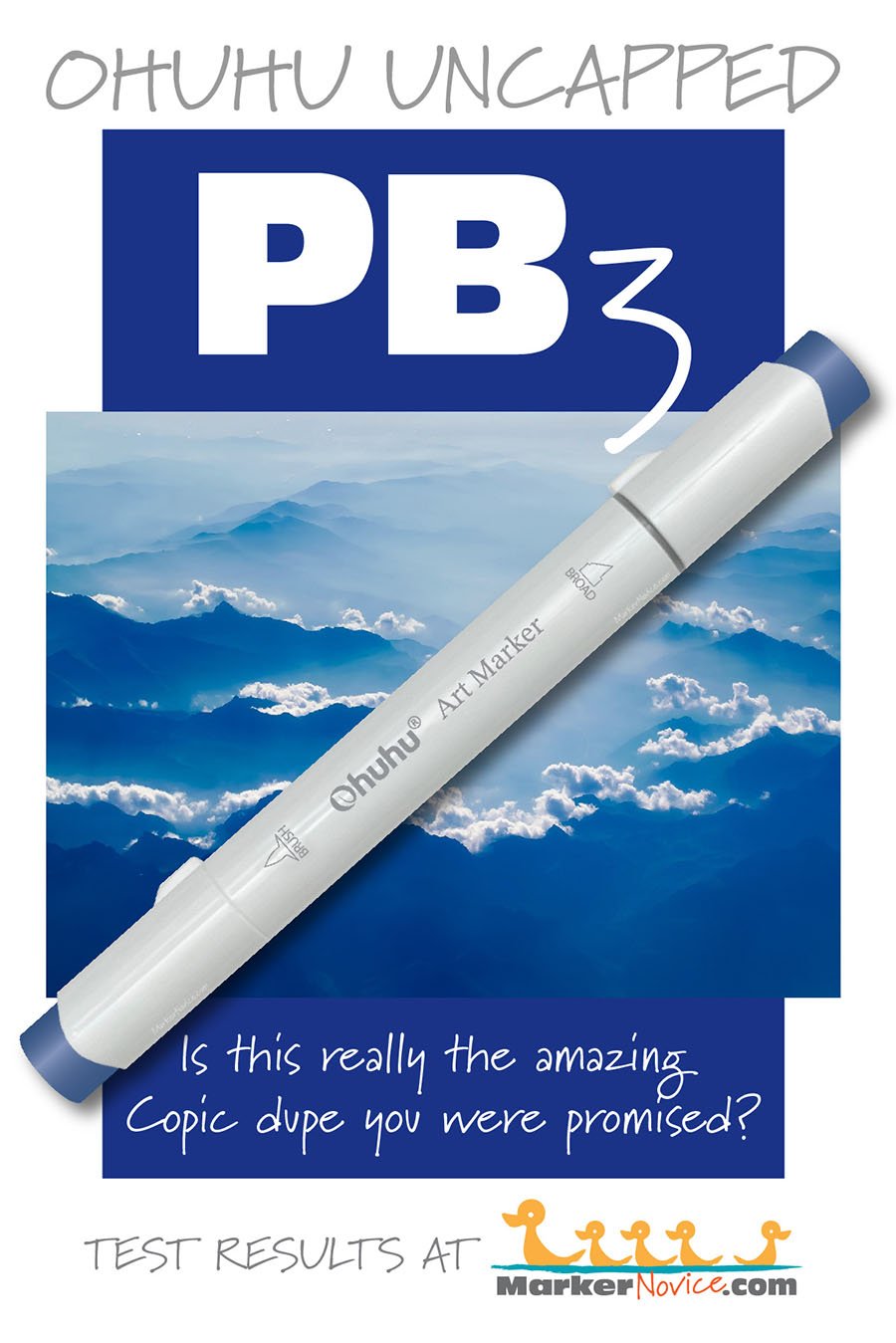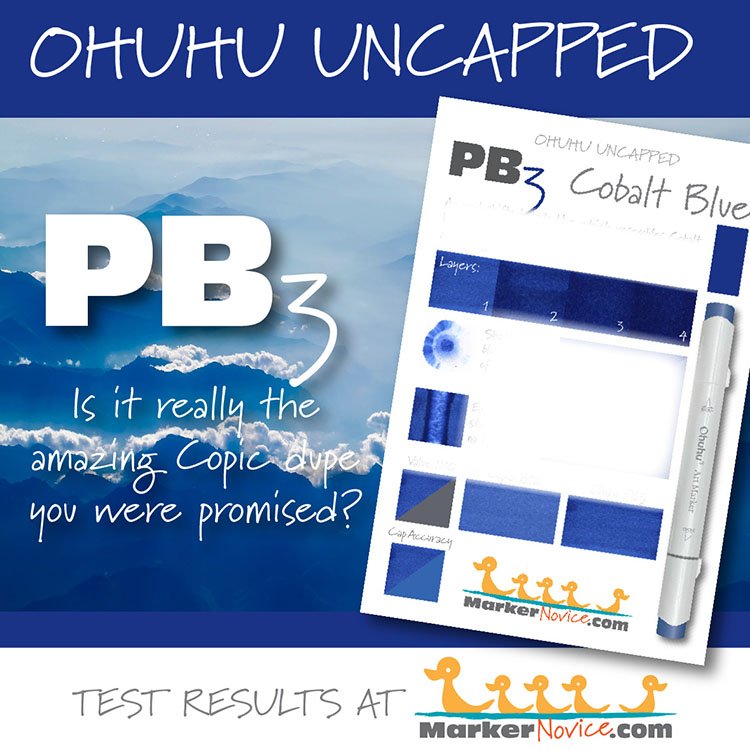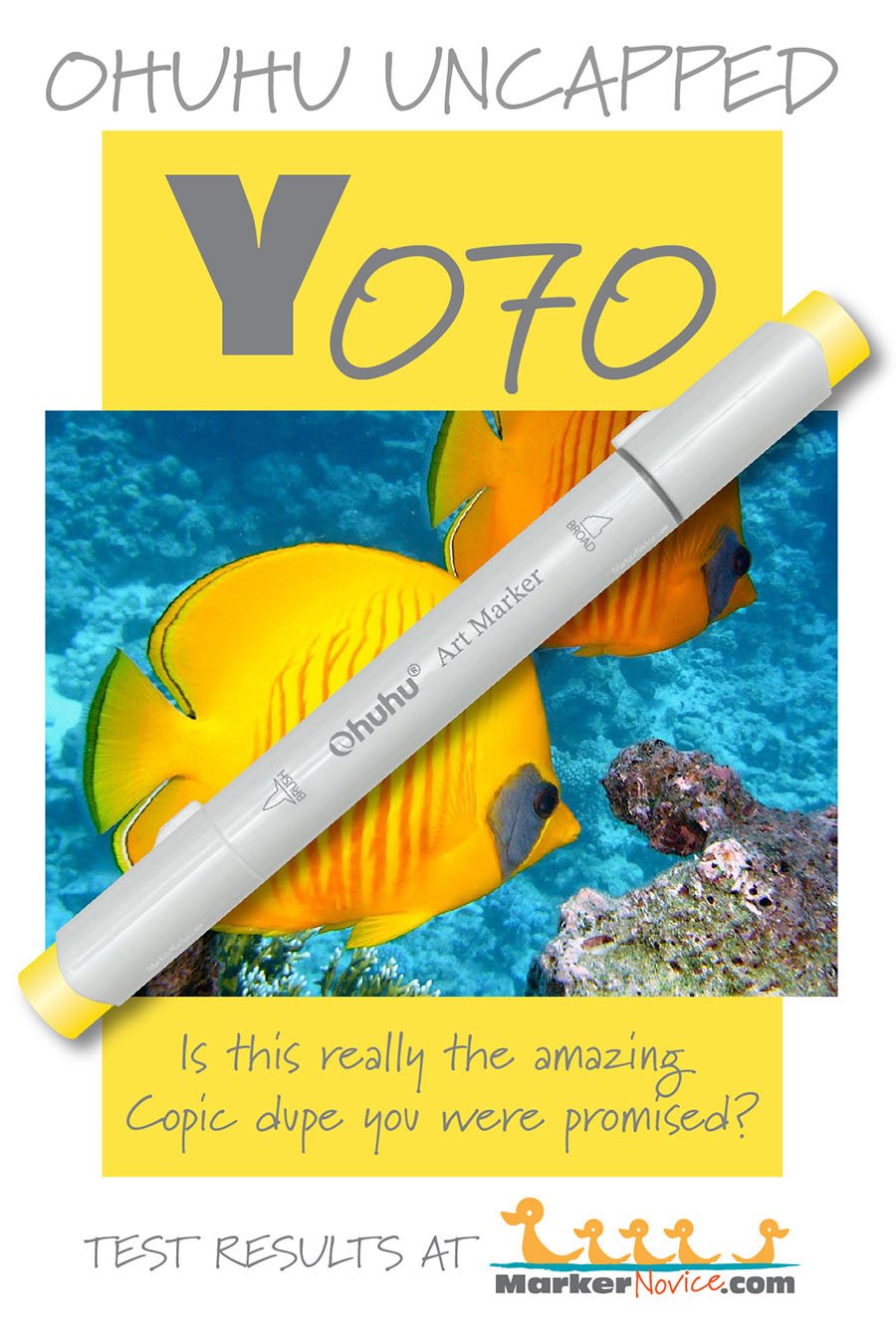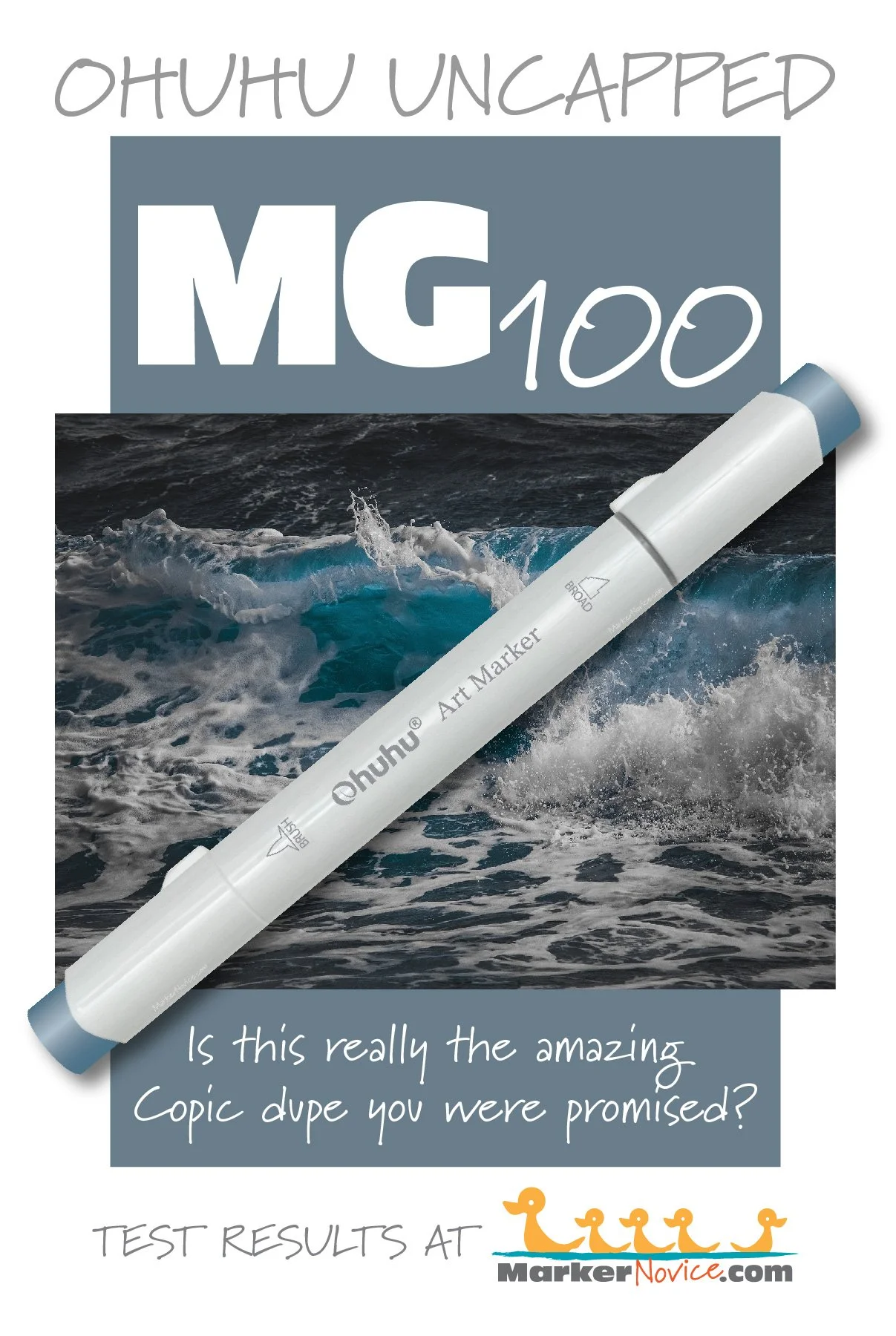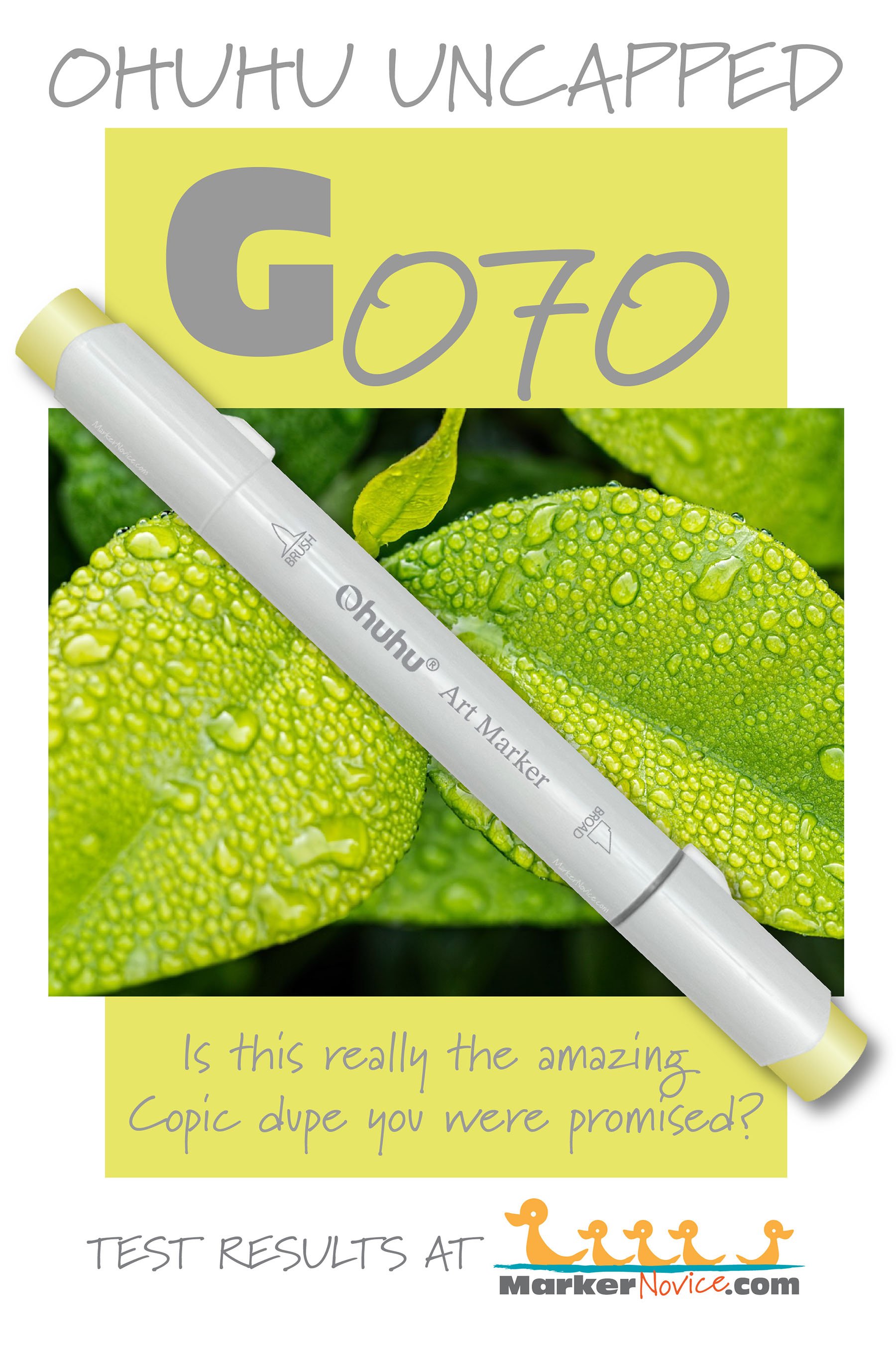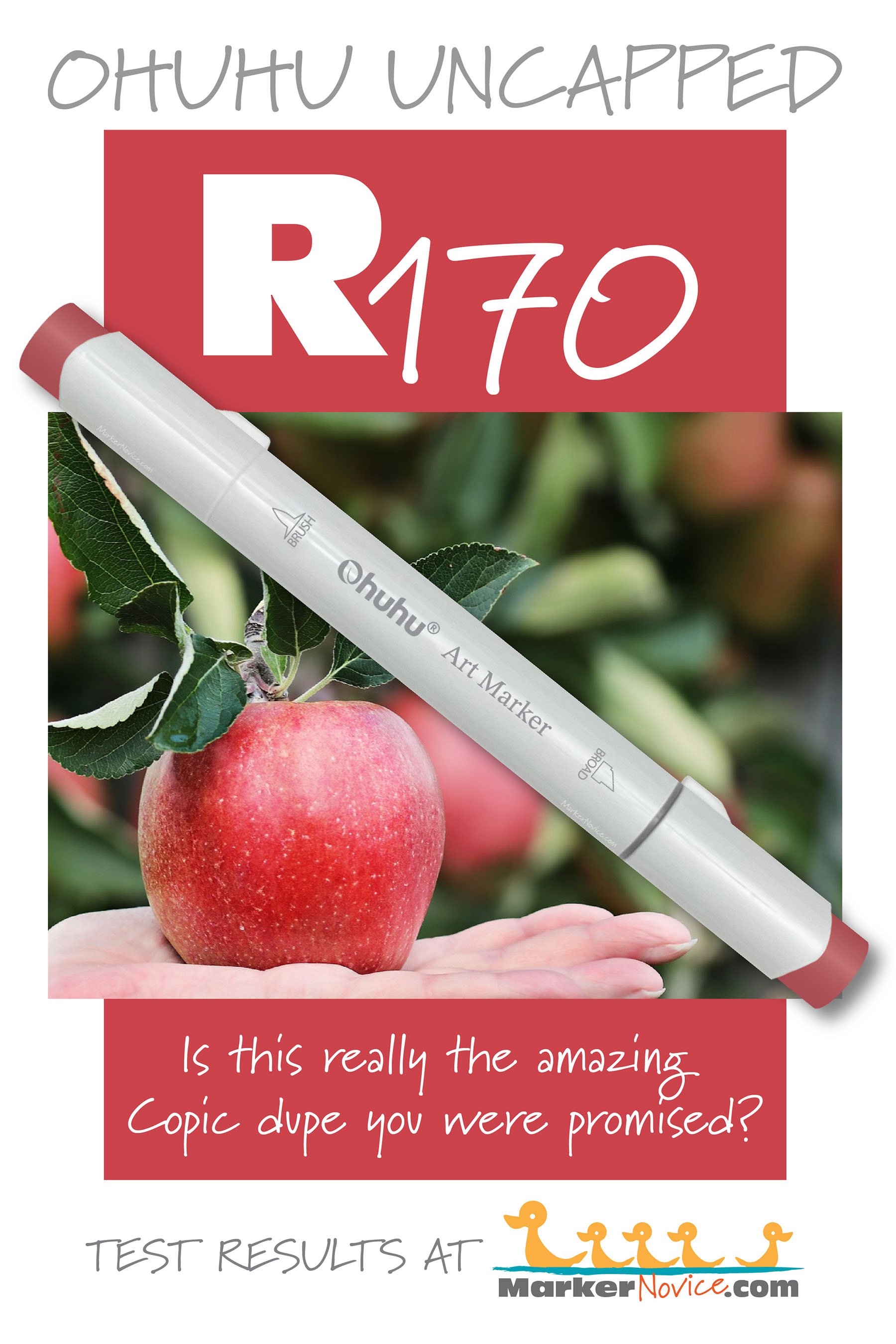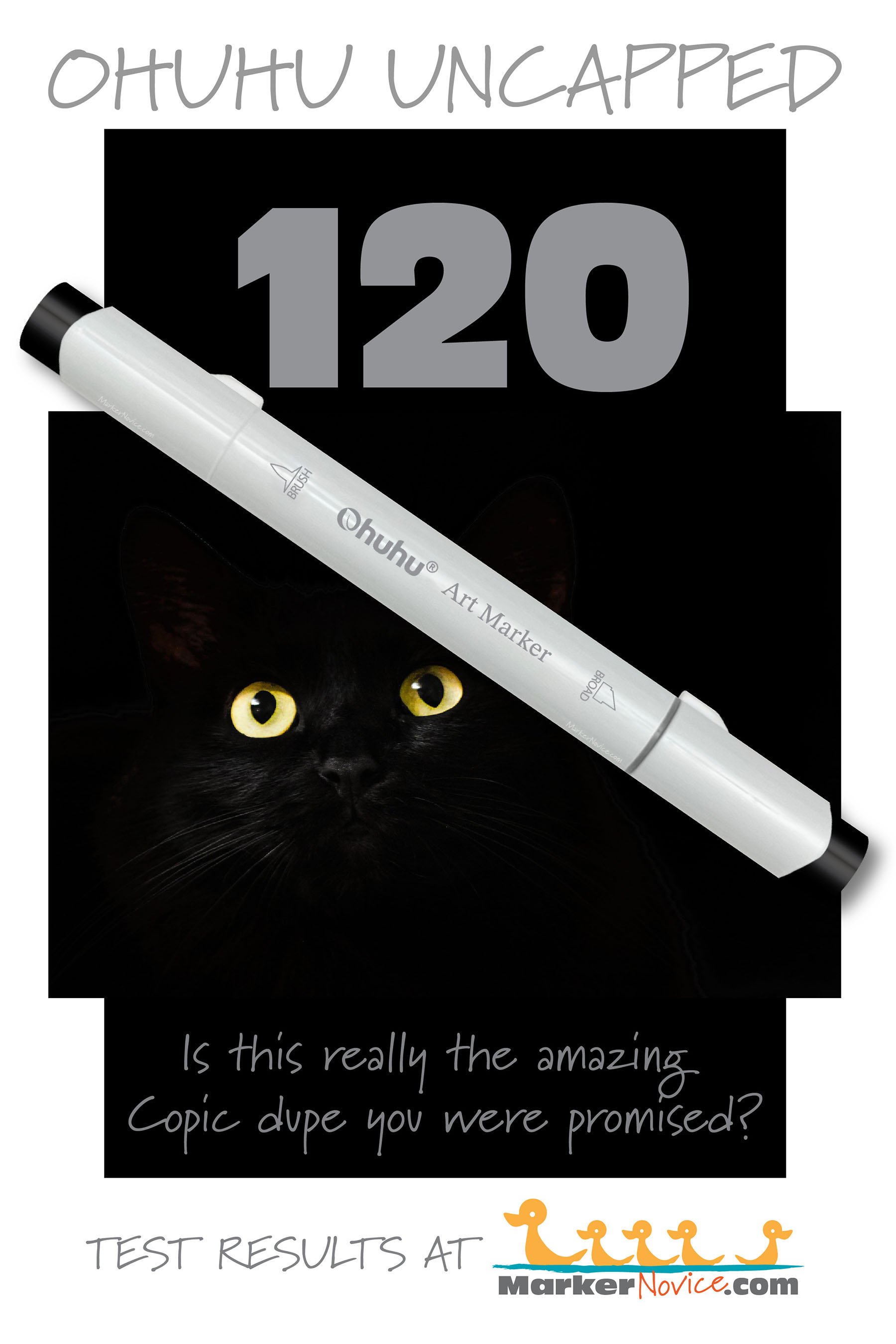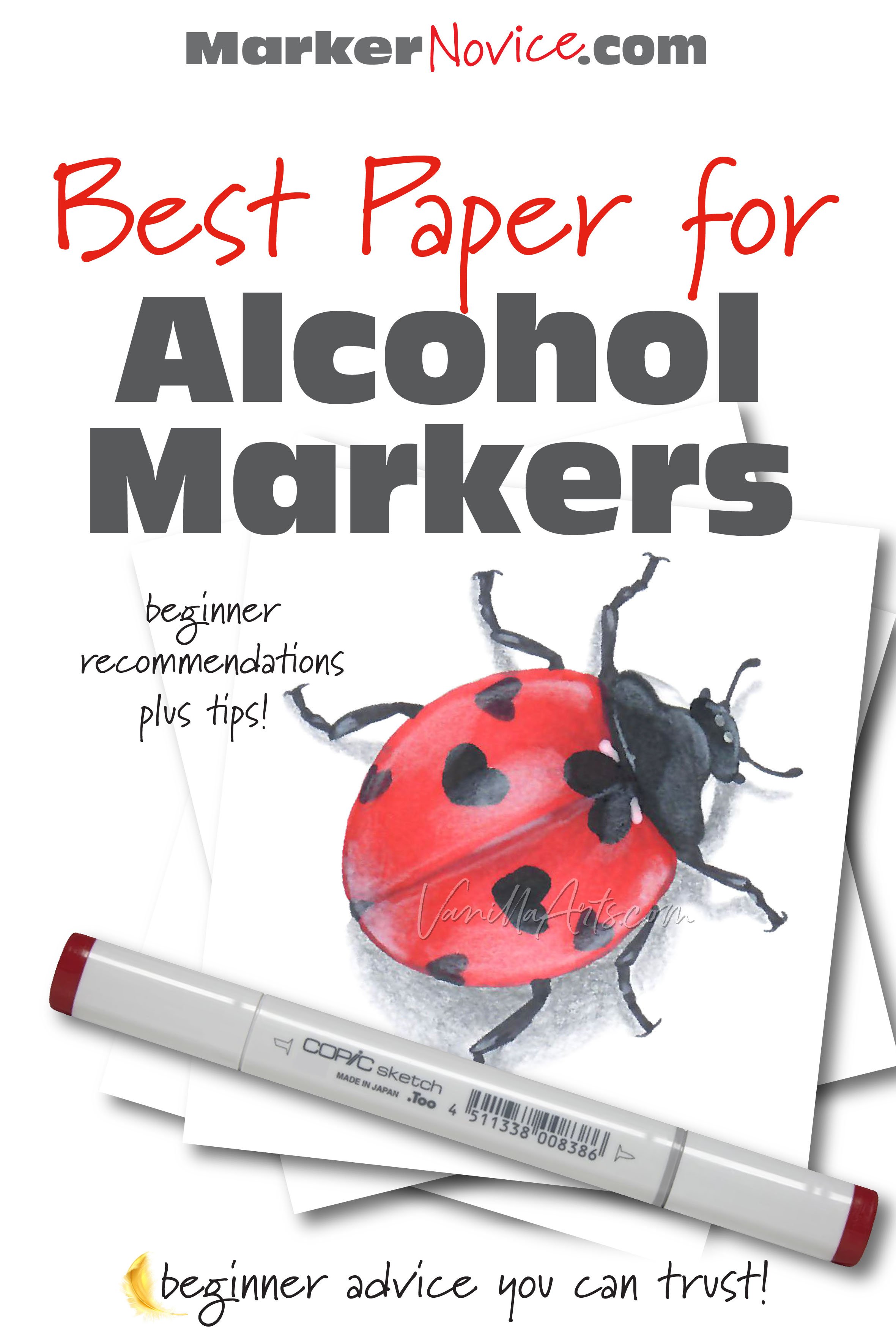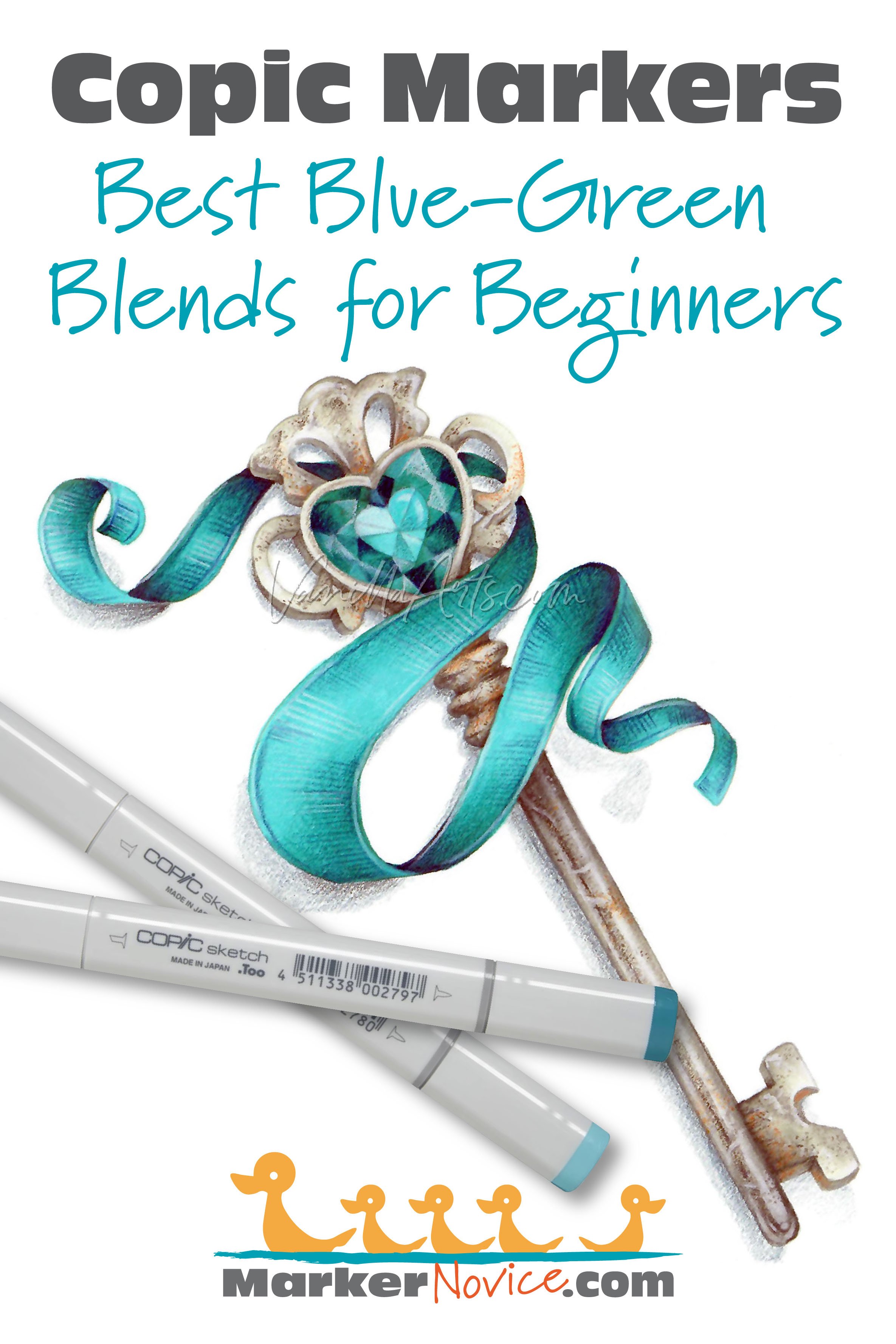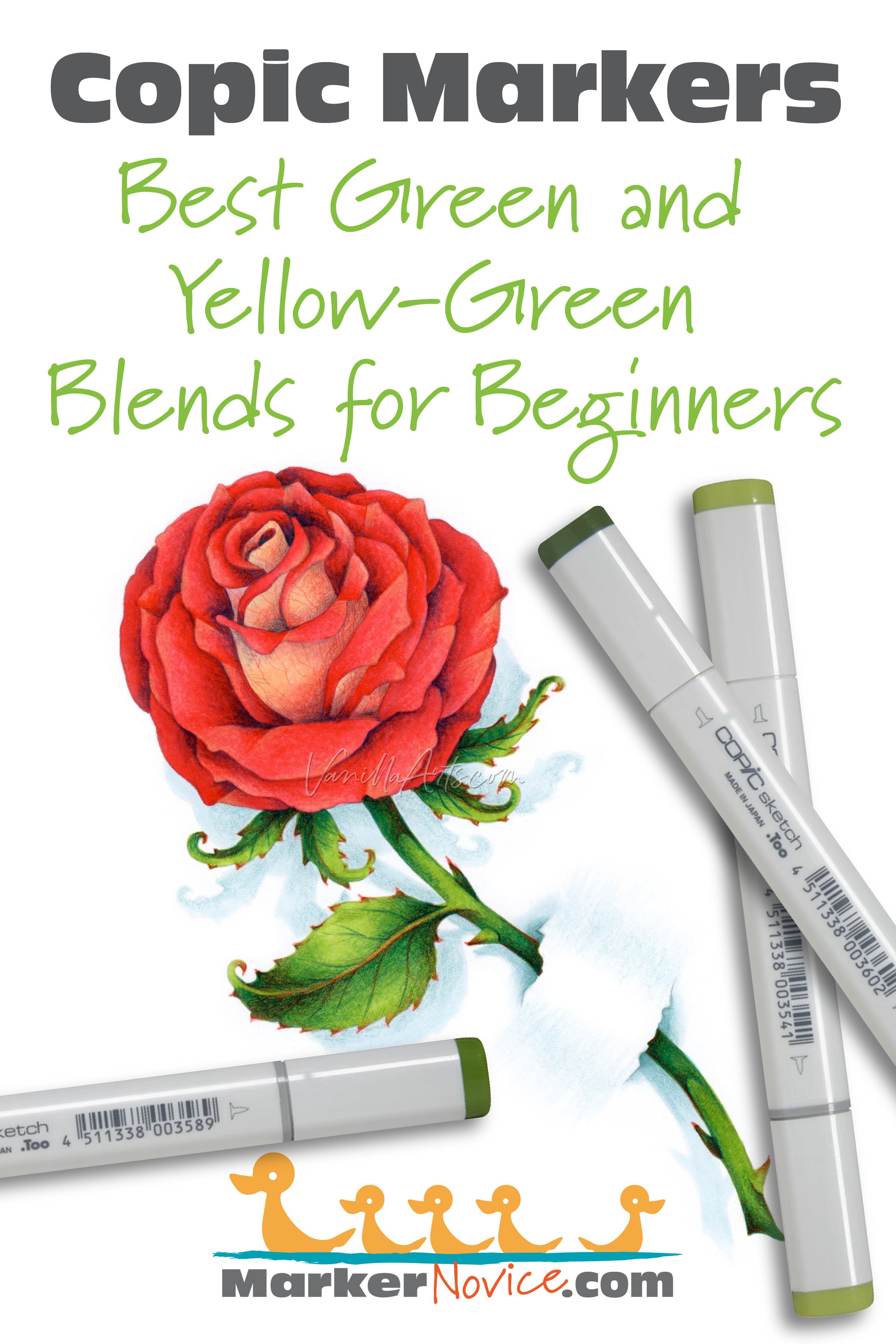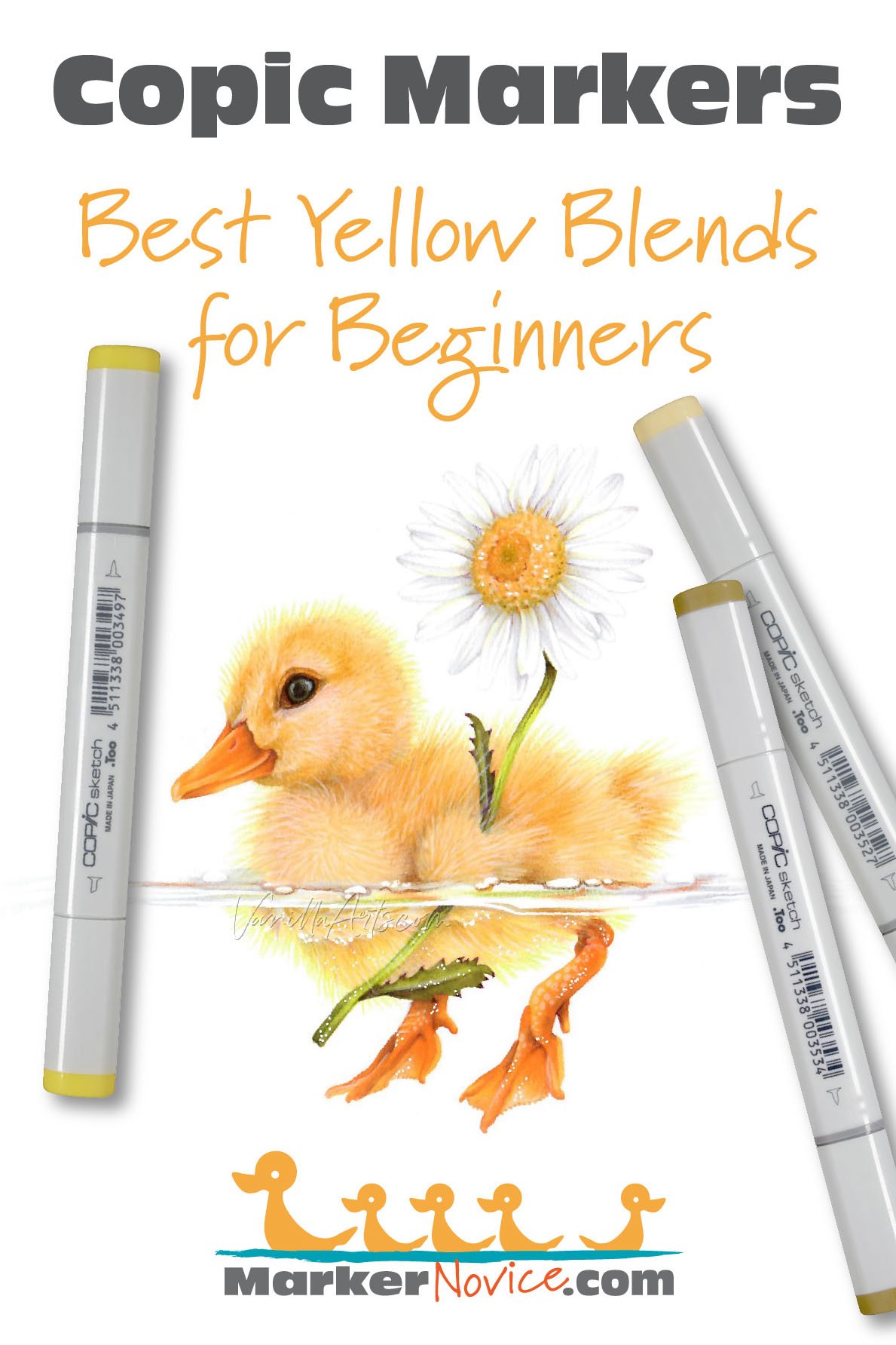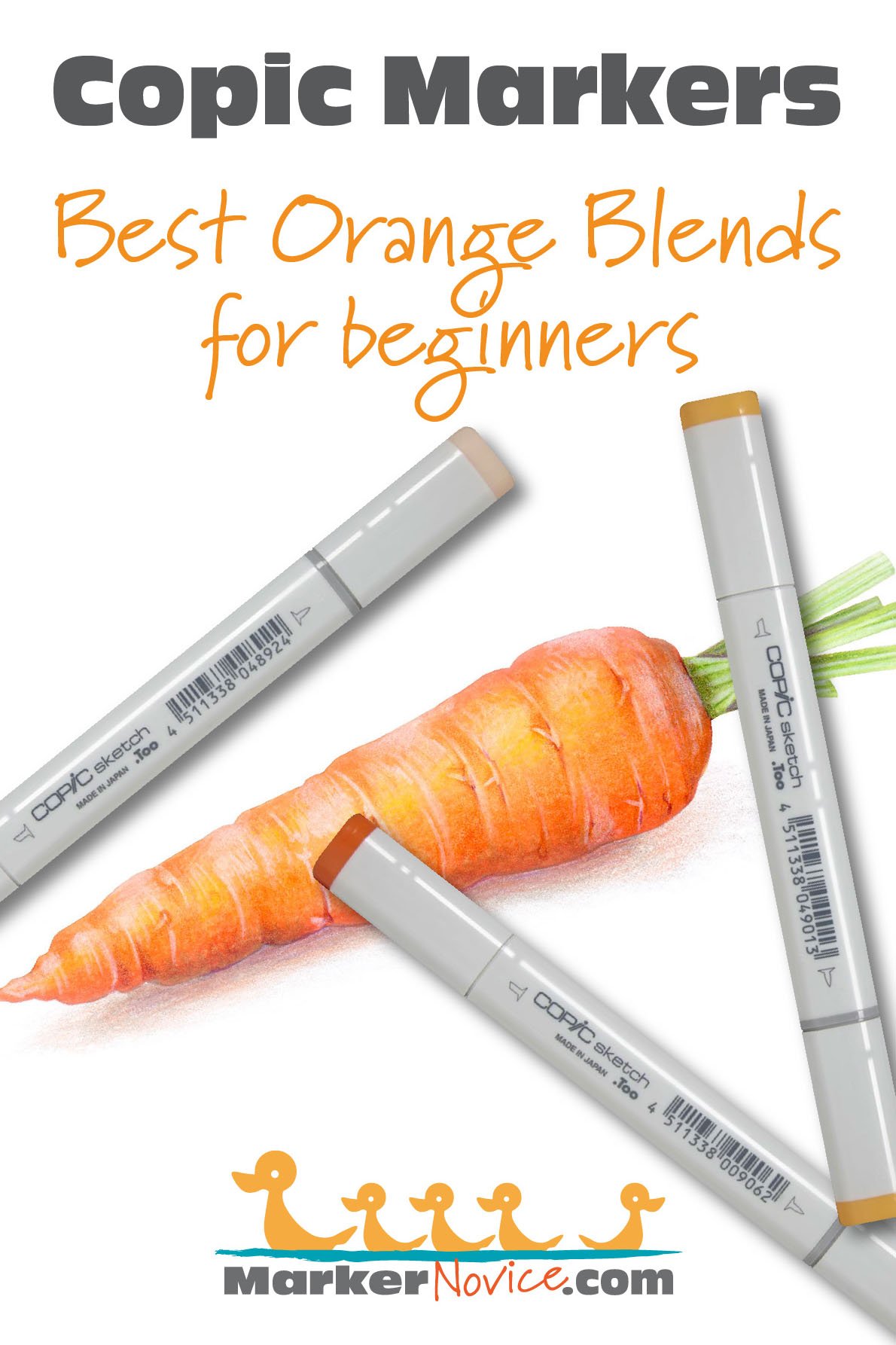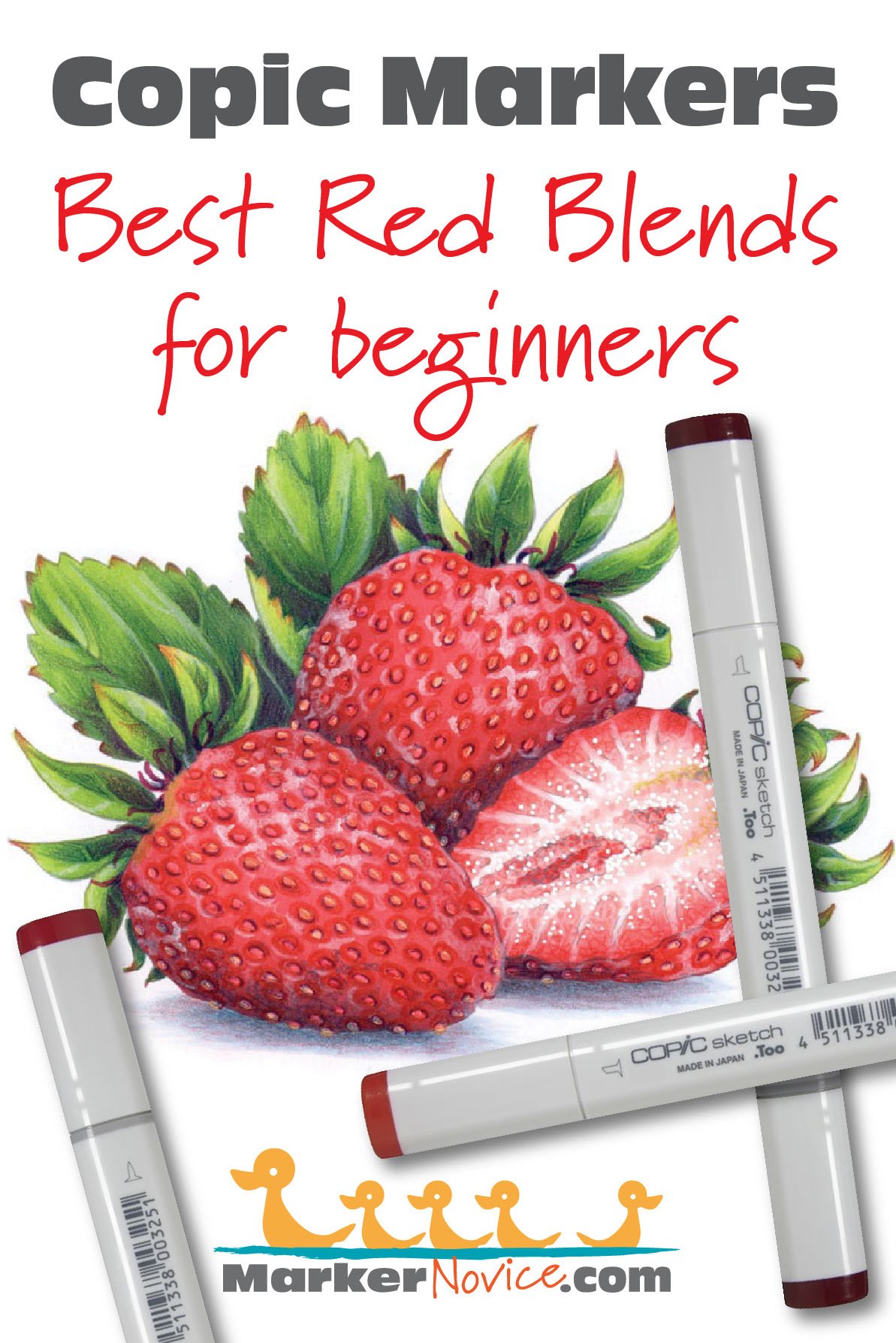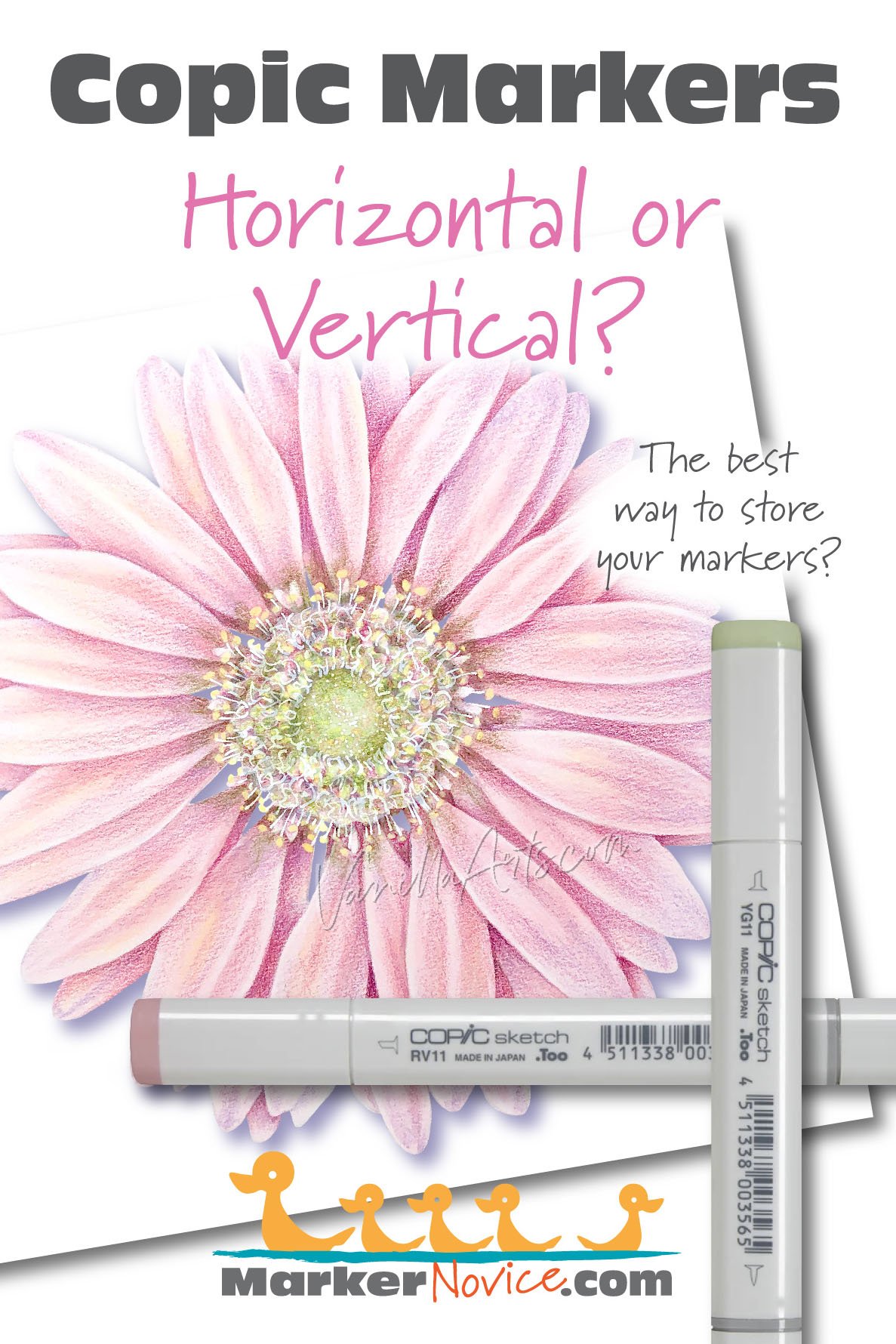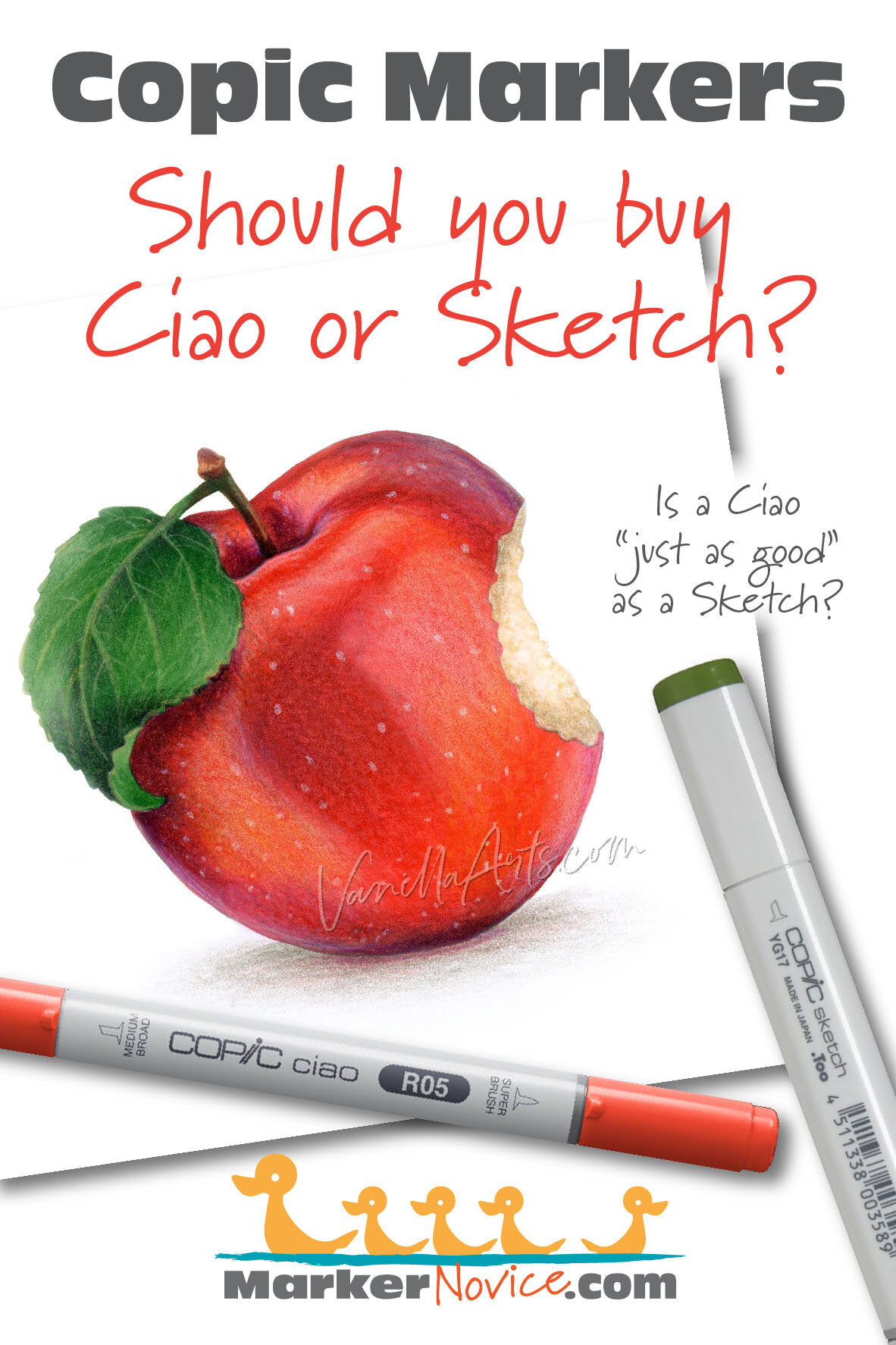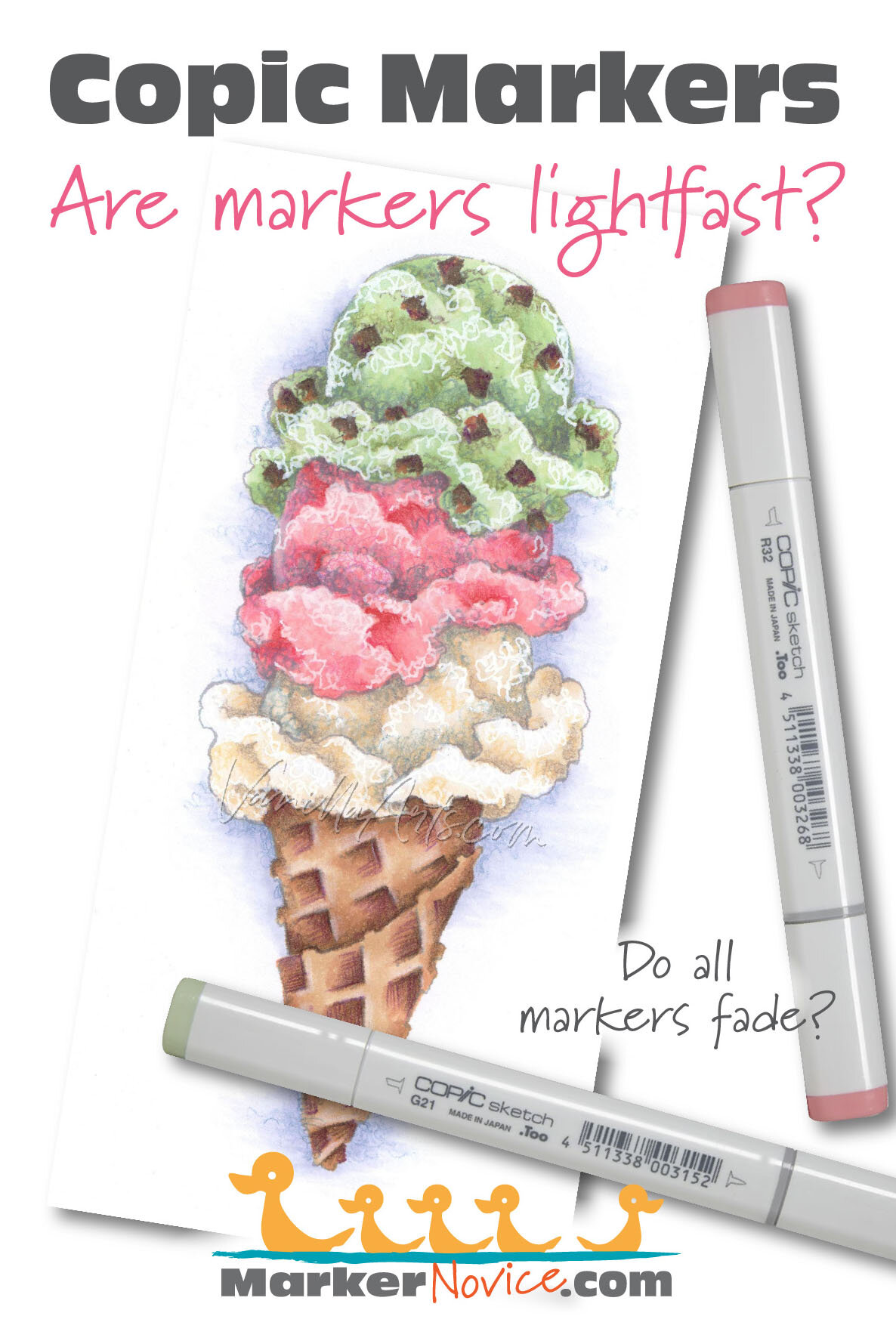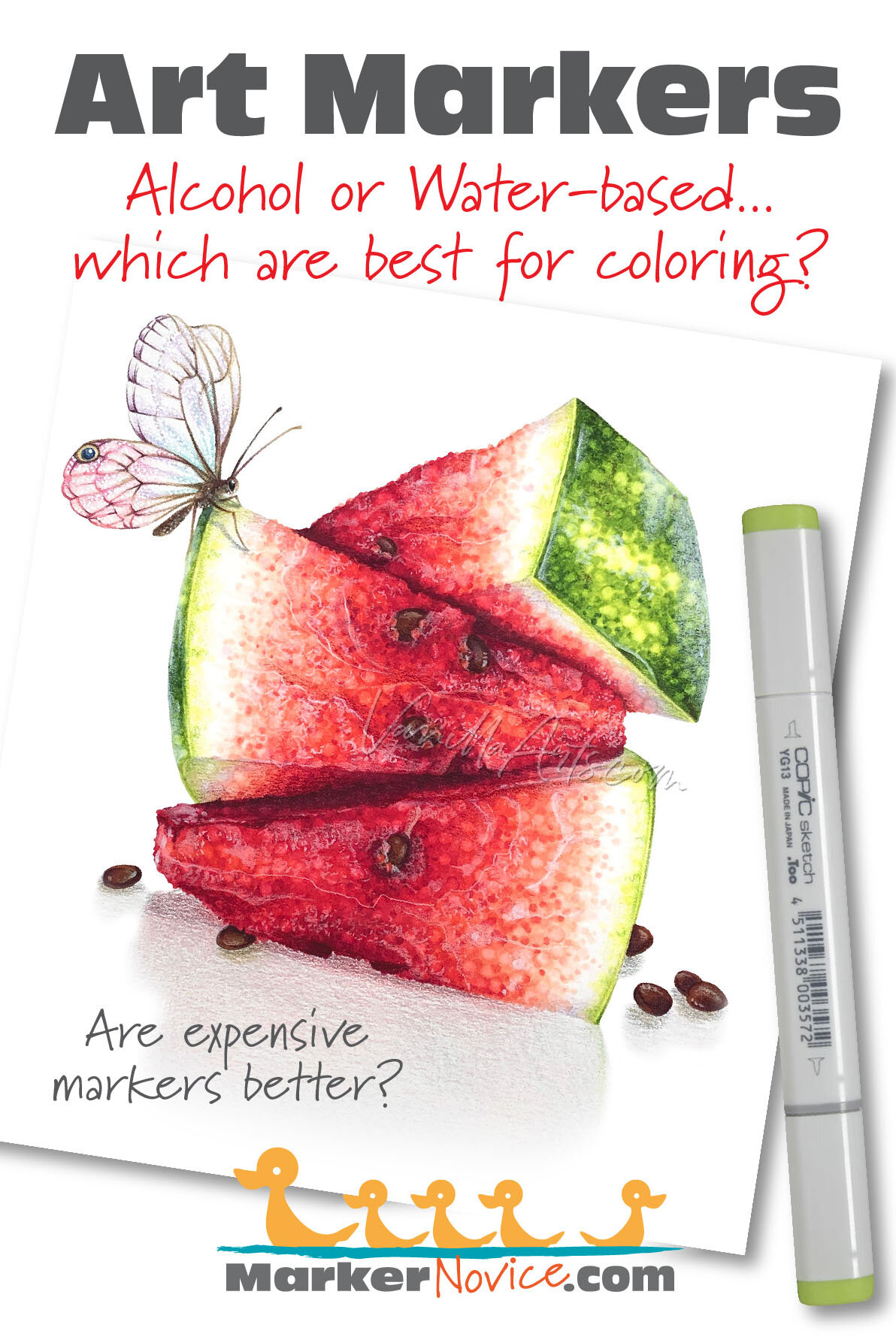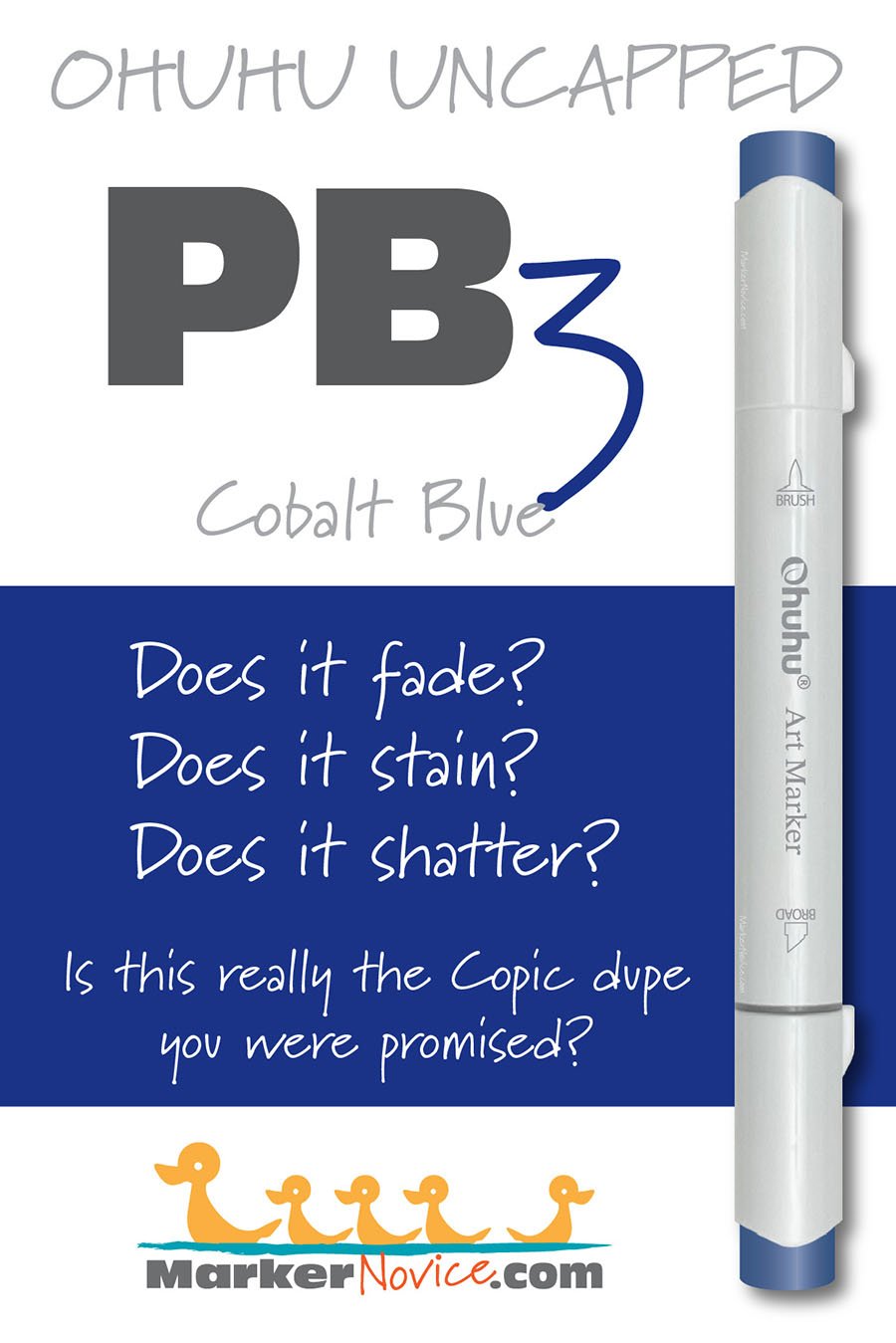You were told “Ohuhu is the Copic slayer! They’re like Copic Markers but better!”
Is it true?
Every Ohuhu Marker has different characteristics based upon its unique ink formula. No matter how great they say the marker is, test results do not lie.
So are Ohuhu markers as great as you’ve heard?
Let’s look at Ohuhu PB3 to find out.
WARNING: Ohuhu markers have numbers on the cap but not on the body of the marker. We do not recommend coloring with both caps off due to the risk of accidentally placing the wrong caps on a marker.
Test results: Ohuhu PB3 Cobalt Blue
Refill: No
At this time, Ohuhu only sells refills for 50 colors (not exactly what they advertise, eh?). They do not sell refills for this marker so when it stops blending well, you’ll need to purchase a new marker. See Ohuhu’s current list of refills here.
Temperature: A red-shifted medium-dark blue.
Resemblance: Cobalt Deep watercolor
Actual Value: N10
Unlike Copic, Ohuhu does not measure value— this is a glaring deficiency which makes finding blending combinations harder than it has to be!
All Copics are measured on a Neutral Gray value scale. The last number on the Copic cap indicates the value. We’re using the Copic scale to measure Ohuhu until Ohuhu releases a reliable value scale.
Color Name: “Cobalt Blue” is an accurate name for this marker.
Many Ohuhu color names indicate a serious lack of English speaking staff at Ohuhu headquarters. It’s nice when one of their marker names actually makes sense.
Cap Accuracy: The plastic on an Ohuhu Honolulu PB3 is similar but slightly lighter than one layer of PB3 ink. This is a problem because almost nobody uses only one layer of marker ink. This is typical for Ohuhu and I suspect this is why so many people complain about Ohuhu cap accuracy. The plastic looks like one layer but the user applies 3 layers of ink.
A common complaint about Ohuhu is that the caps are not an accurate match to the ink inside the marker. I disagree. I have yet to find a marker that I’d classify as drastically wrong. The names may be odd and the numbering system is trash but for the. most part, the color of the plastic usually comes close to the ink.
Copic Substitution: Ohuhu B140 is slightly darker but similar to Copic’s B18. They are not the same ink due to the difference in test results.
Note: similar colors rarely behave the same way. From experience I can say Copic B18 is a moderatly easy blending marker which is typical for darker Copics. Meanwhile Ohuhu PB3 is a stubborn, staining color which is unusual for ANY blue marker. Blue is usually an easy ink to work with and yet PB3 is not. Keep this in mind for ALL art supplies, it’s not enough to match the color— two similar ink, pencil, or paint colors can behave radically different in usage. See Copic B18 test results here.
Buildup: PB3 reaches amost to maximum value at 2 coats. This makes the ink dangerous to work with. Most colorers use 3 layers for blending.
Overinking: As mentioned in above in “Buildup”, PB3 quickly reaches maximum value at 2 layers. 3-4 layers are what the average person uses in blending at which point PB3 will already be looking overinked and oily. This is why I will not recommend PB3 for beginners.
Shattering: PB3 shatters into two dyes on contact with colorless blender— blue with with a bit of purple or pink dye.
Chromatography testing shows this ink’s behavior when it comes in contact with #0 Colorless Blender (solvent). High shattering colors may leak unexpected color when you make corrections or attempt to blend with any color that has a high solvent to colorant ratio. Shattering is not bad, it’s just something to be aware of.
Staining: PB3 is an extremely staining color. Beware as you’re blending PB3 with a lighter color of ink as the solvent in the light ink may cause PB3 to separate. I saw hints of pink around the edges of several of my test swatches and I wasn’t even blending. PB3 almost shatters itself!
With alcohol markers, a staining ink is generally a sign of a low quality ink. Staining inks bond to the paper fibers and are reluctant to release. Staining inks make blending harder than it has to be!
Lift: PB3 is one of the worst lifting Ohuhu markers I’ve tried. Please look at the test sample above and note the extremely dark borders on the stripe where the colorless blender was applied. Would you want similar dark stripes to appear at the edges of your blend zones? Would you want these dark stripes where you’ve tried to make a correction?
See staining swatch. Sample was given 6 stripes of #0 Colorless Blender, drying between each stripe. Results indicate how much lifting you can expect.
Lightfast: PB3 faded by more than 50% during the test period. This is an unacceptable level of fade. For comparison, Copic B18 had a fade of about 10% during the same time frame..
Samples were swatched on X -Press It Blending Card. 1 layer of ink was exposed to windowsill sunlight for 21 days. Approximately 10 hours of sun per day based on weather conditions. Note: we do not recommend displaying original marker art under these conditions.
Ink Color Family: Okay, settle in because I’m going to rant.
What does PB mean?
Two possiblities spring to mind: Prussian Blue and Phthalo Blue.
This color family is definitely not Prussian. Prussian Blues tend to be green-shifted and PB3 here has actual red in the formula making it the OPPOSITE of Prussian.
Okay, so what about Phthalo Blue? This makes more sense. Actual Phthalo Blue comes in both green and red shift varieties. BUT there are no PB markers called Phthalo and PB5 is named “Prussian Blue”. If you name one of the PBs “Prussian” doesn’t that indicate you don’t mean Phthalo?
So how about if we look at the entire PB family: are most PB blues green shift (Prussian) or red shift (possible Phthalo)?
PB1, PB2, PB3, PB4, PB5, PB6 - red shift
PB7, PB8 - these aren’t blue, they’re cyan markers
PB9, PB10 - these aren’t blue, they’re greenish aqua
PB11 - green shift
Look, Ohuhu didn’t have to make this hard. Every single PB marker could have easily been called a B just like every other normal marker company in the world does. But no, Ohuhu purposefully goes out of their way to make things stupid. This is sheer, unadulterated stupidity.
The Ohuhu lettering system is complete garbage and doesn’t always make sense. Perhaps Ohuhu breaks the normal color family rules due to carelessness in the translation from Chinese to English. But actually, I suspect the confusion is to purposefully make it hard to track which colors are included in which sets and/or make it easy to change colors based on which ingredients are cheapest at the time.
Cap Numbering: The PB group includes 11 markers numbered from 1 to 11. The order of the PB numbers is not light to dark. The order is also not in groups of 3 (meaning 1,2,3 are one light medium, dark blending combination, then 4, 5, 6 and 7, 8,9 are other L-M-D combinations)
The PB markers aren’t even releated to each other (see the red/green shift breakdown above).
I see no reason why these markers are singled out as PBs and I suspect the numbers were assigned randomly.
Why do I feel like I’ve spent more time trying to figure out the Ohuhu numbering system than Ohuhu spent creating it?
Stupid. This is all so stupid.
As stated above, the Ohuhu numbering system generally makes no sense. The markers are not arranged in chromatic order so you can not trust the numbers to tell you whether this marker is lighter or darker than other Ohuhu markers with similar numbers.
I’m still early in the Ohuhu testing process. I will add more info to this article as I learn more and when I spot behavioral patterns.
From what I’ve learned so far, I will not be working with Ohuhu markers and I will discourage students from using them in my classes. They’re simply not worth the frustration.

